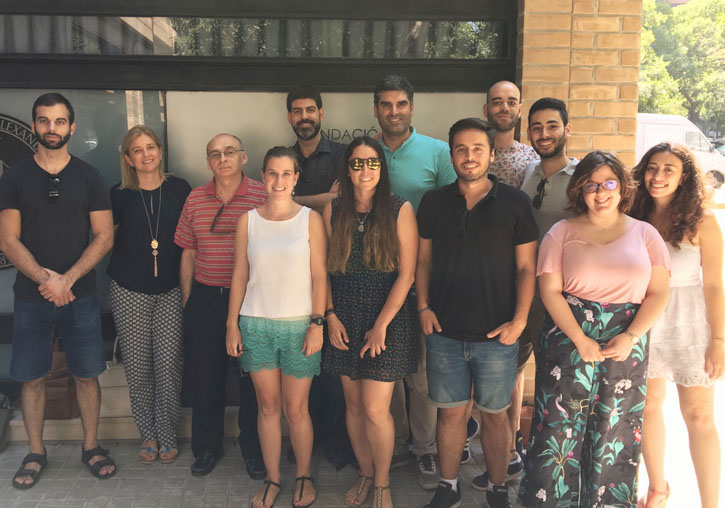New drug confirmed as potential therapeutic agent for Friedreich’s ataxia
- Press Office
- November 25th, 2020

A study in which the research group led by Federico Pallardó, from the Department of Physiology of the Faculty of Medicine and Dentistry of the Universitat de València, has confirmed the benefits of the leriglitazone drug for treating Friedreich’s ataxia, a rare disease that affects 2-4 people out of 100,000 and for which there is currently no effective cure.
Friedreich’s ataxia is characterised by provoking a progressive lack of movement’s coordination. The first symptoms usually appear during preadolescence and become more severe with age. Generally, people who suffer from the disease have to use a wheelchair before the age of 20.
This drug ameliorates frataxin deficiencies in cellular and animal models of Friedreich’s ataxia. This disease is caused by a deficiency of frataxin levels, which results in mitochondrial dysfunction with neurological and cardiac affectations. The study has been published in the journal ‘Neurobiology of Disease’.
The study is a collaboration between the research group led by Federico Pallardó, the company Minoryx Therapeutics and INCLIVA, which belongs to the Biomedical Research Networking Centre on Rare Diseases (CIBERER), a Biochemistry Research Group on Oxidative Stress by the University of Lleida (UdL) and the Biomedical Research Institute of Lleida (IRBLleida), and the Department of Paediatrics and Neurology of The Children's Hospital of Philadelphia.
“In our laboratory, we have carried out a clinical testing on a mouse model of Friedreich’s ataxia. After orally administrating leriglitazone to the mice, we observed an improvement in their motor function. This is a very promising result for the future therapeutic use of leriglitazone in patients”, explained Pilar González-Cabo, CIBERER researcher and head of the project.
The following steps in the research are to see the results of the clinical testing that is being carried out by Minoryx Therapeutics and to still provide molecular evidence of the improvement of the cellular alterations that occur due to a lack of frataxin.
Leriglitazone, which is taken orally, has an antioxidant, anti-inflammatory and a neuroprotective effect. The drug is currently at an advanced Phase II in clinical trials.
About CIBERER
The Biomedical Research Networking Centre on Rare Diseases (CIBERER) is a consortium under the auspices of the Health Institute Carlos III (Ministry of Science, Innovation and Universities) and is jointly financed by the European Regional Development Fund (ERDF). The CIBER in its Rare Disease Subject Area (CIBERER) is Spain’s reference site on rare diseases. Its main objective is to coordinate and to favour basic, clinic and epidemiological research, as well as to propel that the research carried out in the laboratories reaches the patients and provides scientific answers to the questions arising from doctor-patient interactions. CIBERER’s human team is made up of more than 700 professionals and integrates 60 research groups. Furthermore, it has the support of 18 linked clinical groups. www.ciberer.es/en
Reference article:
Laura Rodríguez-Pascau, Elena Britti, Pablo Calap-Quintana, Yi Na Dong, Cristina Vergara, Fabien Delaspre, Marta Medina, Jordi Tamarit, Federico V. Pallardó, Pilar Gonzalez-Cabo, Joaquim Ros, David R. Lynch, Marc Martinell, Pilar Pizcueta. “PPAR gamma agonist leriglitazone improves frataxin-loss impairments in cellular and animal models of Friedreich Ataxia”. Neurobiology of Disease, 2020, 105162, ISSN 0969-9961, https://doi.org/10.1016/j.nbd.2020.105162.
File in: Investigació a la UV , Fisiologia
















